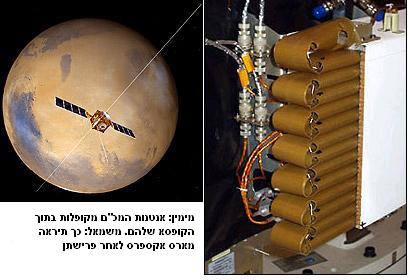The European Mars Express spacecraft will activate, starting in May, a device that was shut down until now due to fears that its activation would damage the spacecraft - a radar for locating underground water

A radar on board the European spacecraft Mars Express, which will search for water on Mars, should start operating in the first week of May, after a delay of over a year. The device, Marsis, was supposed to start operating in April 2004, but last-minute concerns, according to which the pulses transmitted by the radar through its antenna could also come back and damage the spacecraft, caused the scientists to leave the device in the box until the investigation of the issue was completed.
The device, which includes a radar and an altimeter, will search for water up to a depth of 5 kilometers below the surface of Mars. The three rays of Marsis are stored inside the spacecraft and will be released when a pyrotechnic device is ignited.
The device, made of hollow fiberglass 20 meters long includes the main antenna while a second component 7 meters long acts as a receiving antenna only.
Fear of damage
Data from a mathematical analysis made by the manufacturer of the antennas, California-based Astro Aerospace in early 2004 led to the hypothesis that the devices may jump backwards in a greater range of motion than expected after opening. Concerns that they could damage the delicate instruments on the spacecraft caused flight controllers to halt the installation of the device while the Marsis team conducted a comprehensive investigation of the device's dynamics.
In the picture: Marsis' main antenna is folded up like a concertina (wire fence) inside a box.
The conclusions of the investigation were that there was a chance that one of the components rose to release and damage the spacecraft. The European Space Agency's inspection team met in January to discuss the findings and ultimately recommended that the beams be turned on. The team concluded that if an impact does occur, the energy of the collision will be low and the risk of serious damage is small. However, the team said that there is a danger that the antenna could be blocked during the release, either by itself or by the spacecraft.
The team recommended a week-long installation beginning May 2. However, if the remaining preparations are completed earlier than planned, it will be possible to start the installation from April 25.
Marsis, an acronym for The Mars Advanced Radar for Subsurface and Ionosphere Sounding, will look for evidence of subsurface water, frozen or liquid. It is believed that a large reservoir of water is under the surface of Mars.
